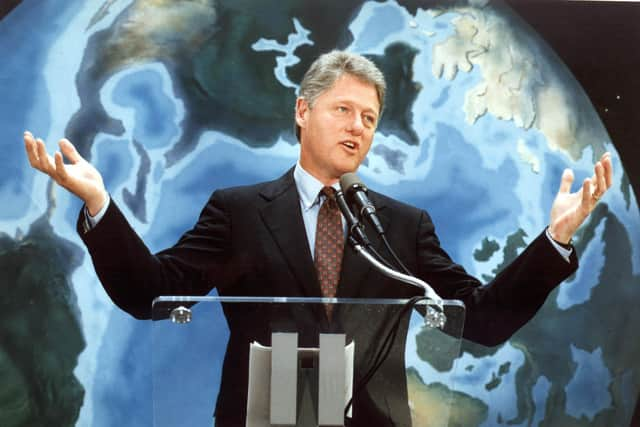Climate change: 30 years on from Rio Earth Summit, did it actually achieve anything? – Dr Richard Dixon
More familiarly known as the Earth Summit, the event was held 20 years on from the 1972 Human Environment Conference and followed the 1987 Brundtland report which cemented the concept of sustainable development.
There was a great deal of optimism that humankind might finally be about to get really serious about the damage we were doing to the planet.
Advertisement
Hide AdAdvertisement
Hide AdIn Scotland, civil society came together in the run-up to the Earth Summit and thousands of pledges were signed by individuals promising to reduce their own environmental impact if governments did their bit.
A key success was seen as the UN Framework Convention on Climate Change containing legally binding targets for developed nations, which spawned the Kyoto Protocol, the Paris Agreement and the Glasgow Climate Pact, among others, from the annual climate talks.
However, half of the rich nations that were supposed to return their climate emissions to 1990 levels by 2000 failed. Despite 30 years of talks, global emissions are not falling, with 15 per cent more carbon dioxide in the atmosphere now than in 1992, and the world is on course for a disastrous three degrees Celsius of warming.
Another legal agreement was the Convention on Biological Diversity. Thirty years on, about a million species face extinction.
WWF’s Living Planet Index, which measures the abundance of life on Earth, declined by 50 per cent between 1992 and the latest data in 2016.


Not as strong as the two conventions, the Declaration of Principles on Forest Management even had ‘non-legally binding’ as the first words of its official title. Globally, deforestation rates have declined, although the Amazon is currently being trashed faster than at any time in the last decade, with an area half the size of Wales disappearing last year.
Agenda 21 was a programme of actions governments could take to move the world in the direction of sustainability, including in education, resource use and participatory decision-making processes.
Despite having no legal force, it was attacked by the US right as an attempt to impose world government. No one talks about Agenda 21 any more.
Advertisement
Hide AdAdvertisement
Hide AdThe Earth Summit was followed up at a Rio+10 event in Johannesburg in 2002 and a Rio+20 event back in Rio in 2012. There is no official Rio+30 event.
Did the Earth Summit galvanise the world’s nations into action? Perhaps briefly. Did the fine aspirations of the Earth Summit’s four big international agreements get delivered? Mostly not.
Did appearing to be taking the issues seriously reduce the pressure to actually do something? To some extent. Is the world in a better state now than it would have been without the Earth Summit and the processes it kicked off? Yes, even though it’s still in a terrible state and mostly getting worse.
Sadly the best we seem to be able to say about the Earth Summit and the subsequent 30 years is that things aren’t quite as bad as they would have been if we hadn’t bothered.
Dr Richard Dixon is an environmental campaigner and consultant
Comments
Want to join the conversation? Please or to comment on this article.
